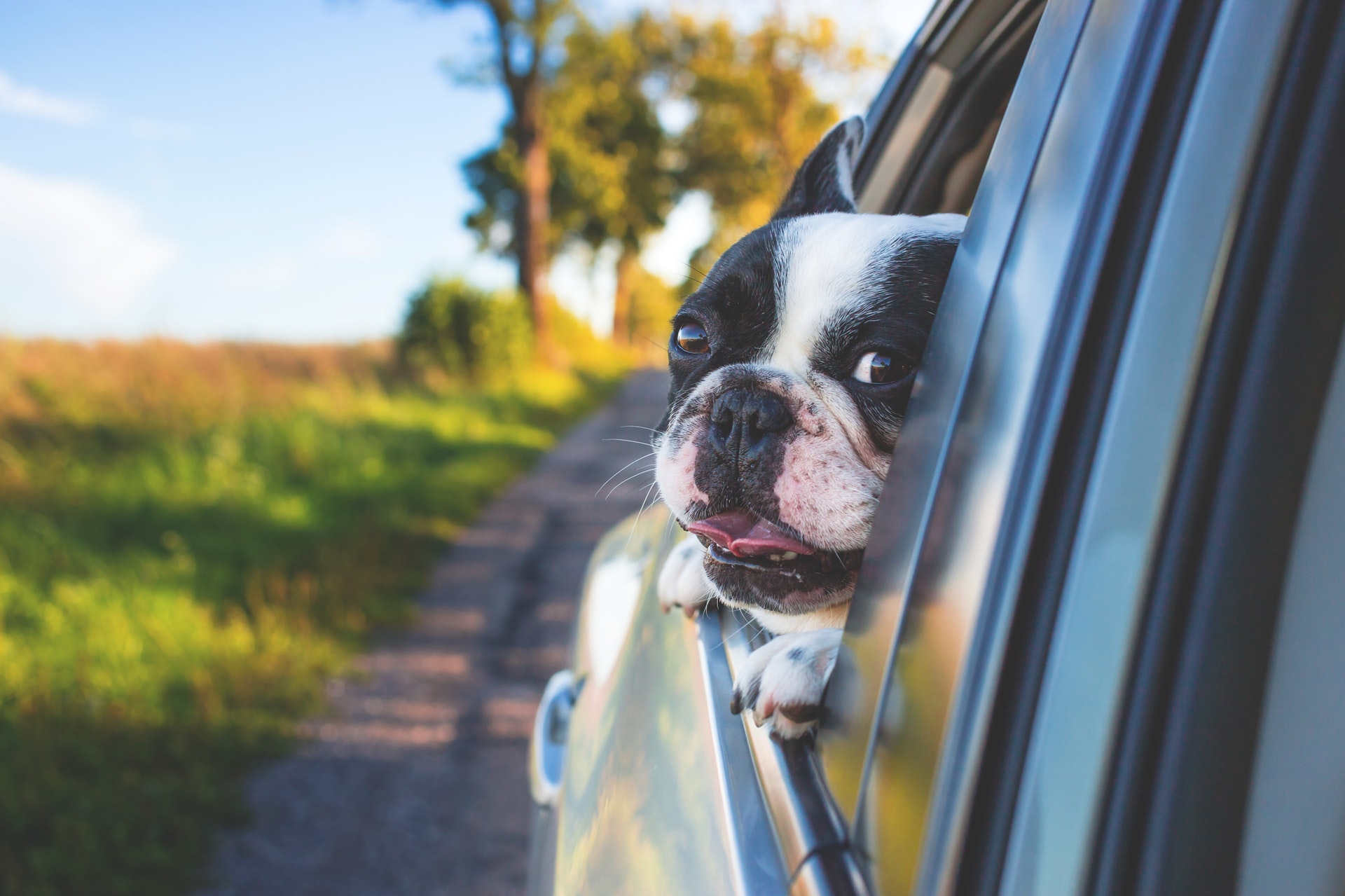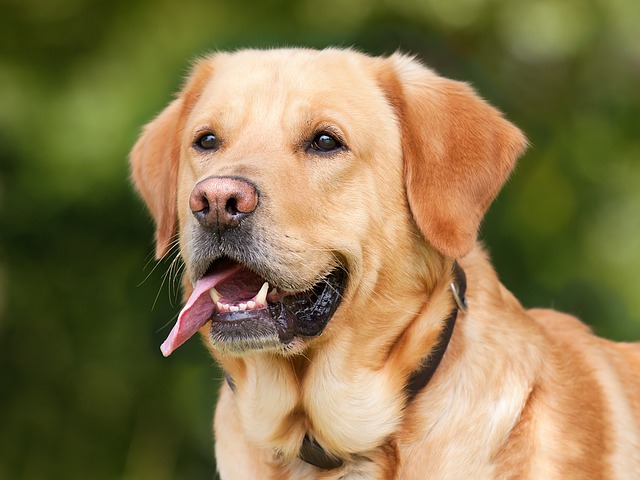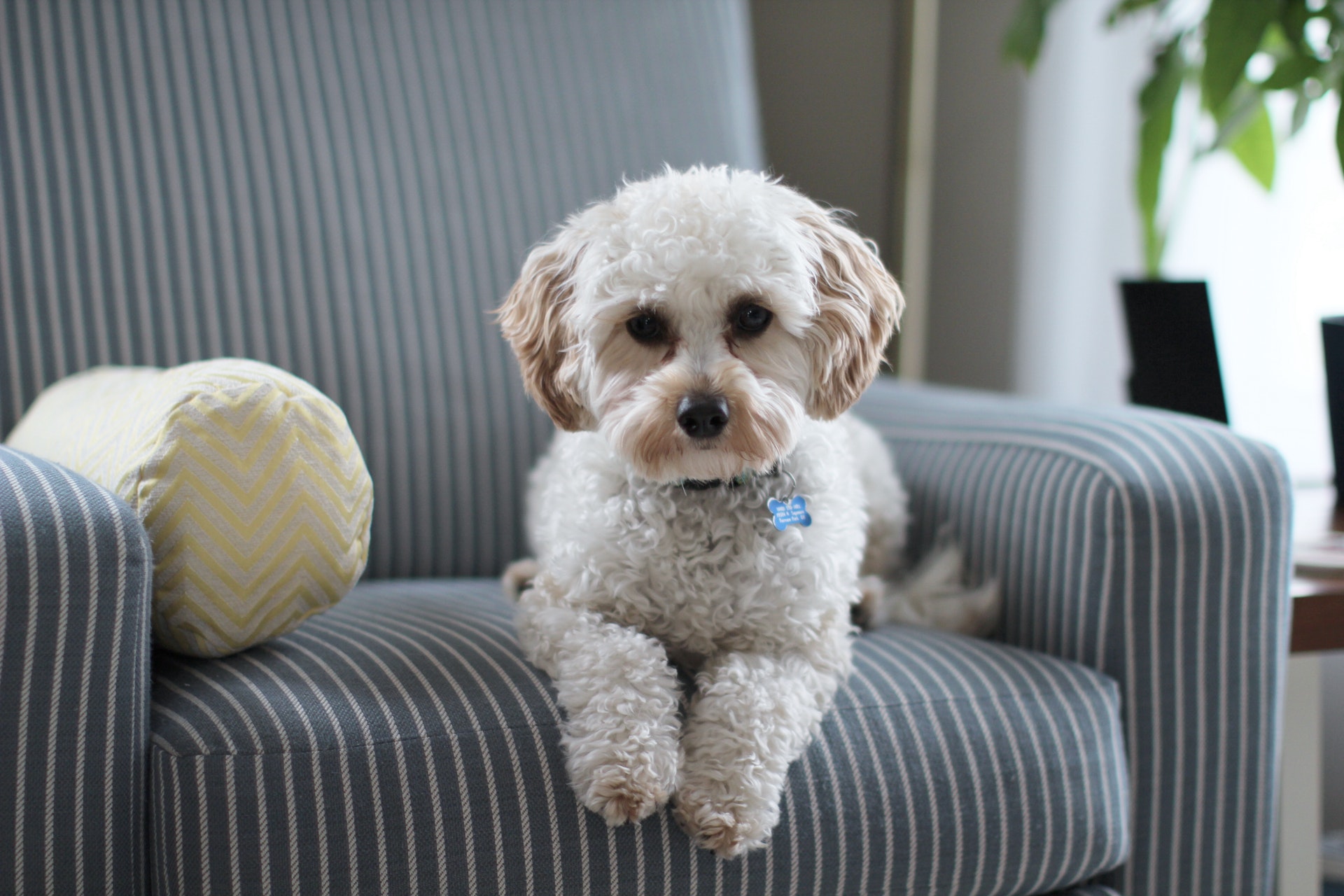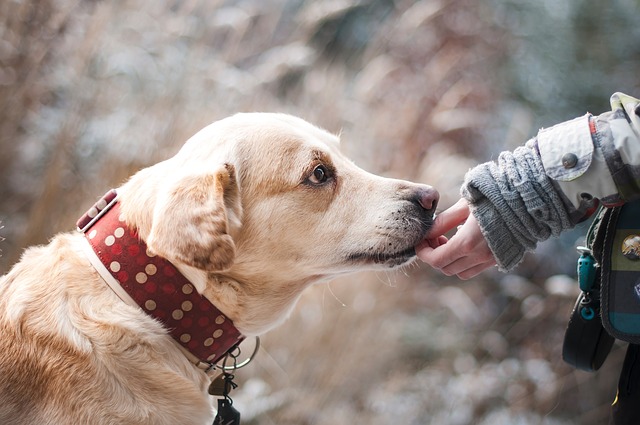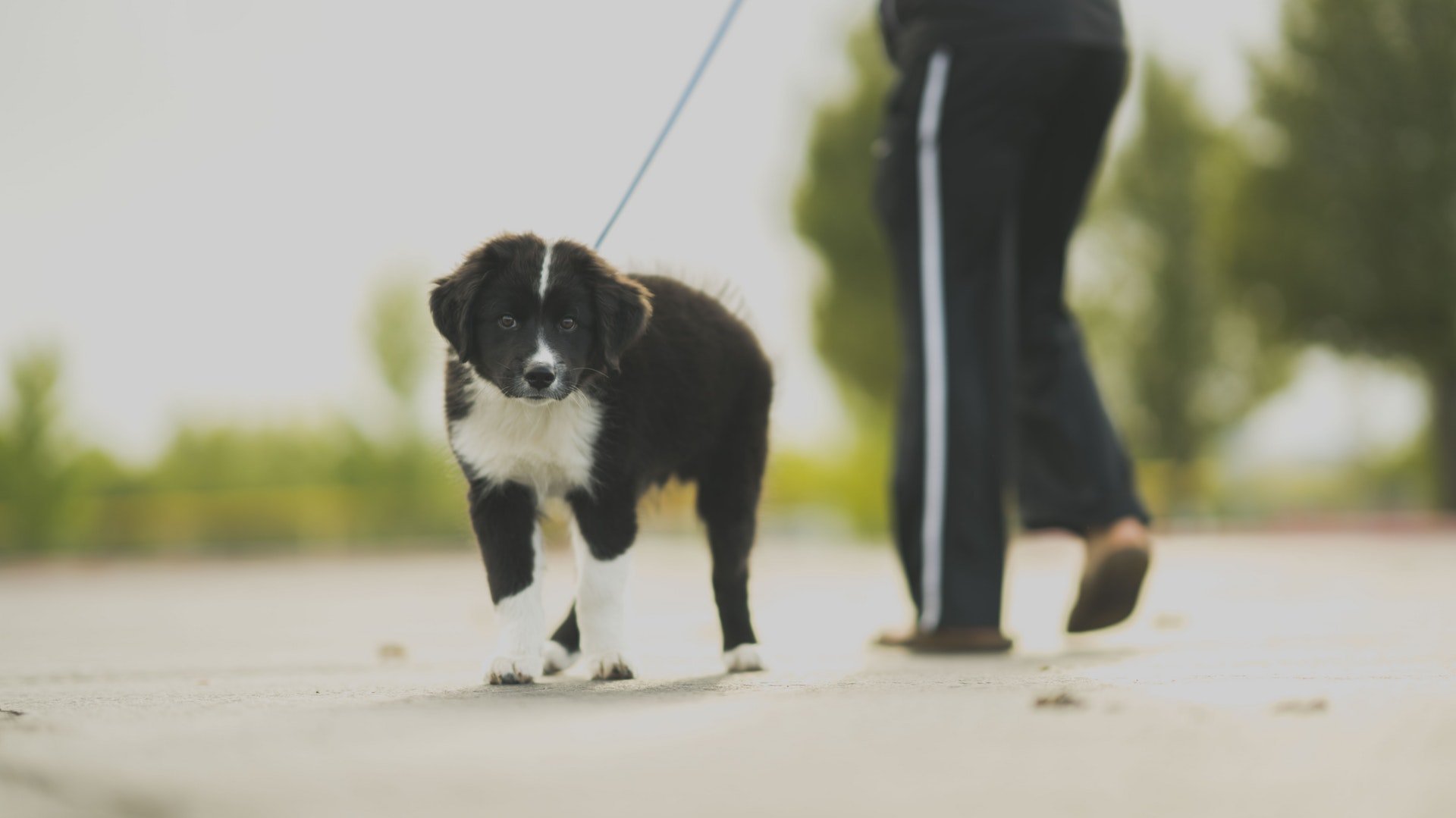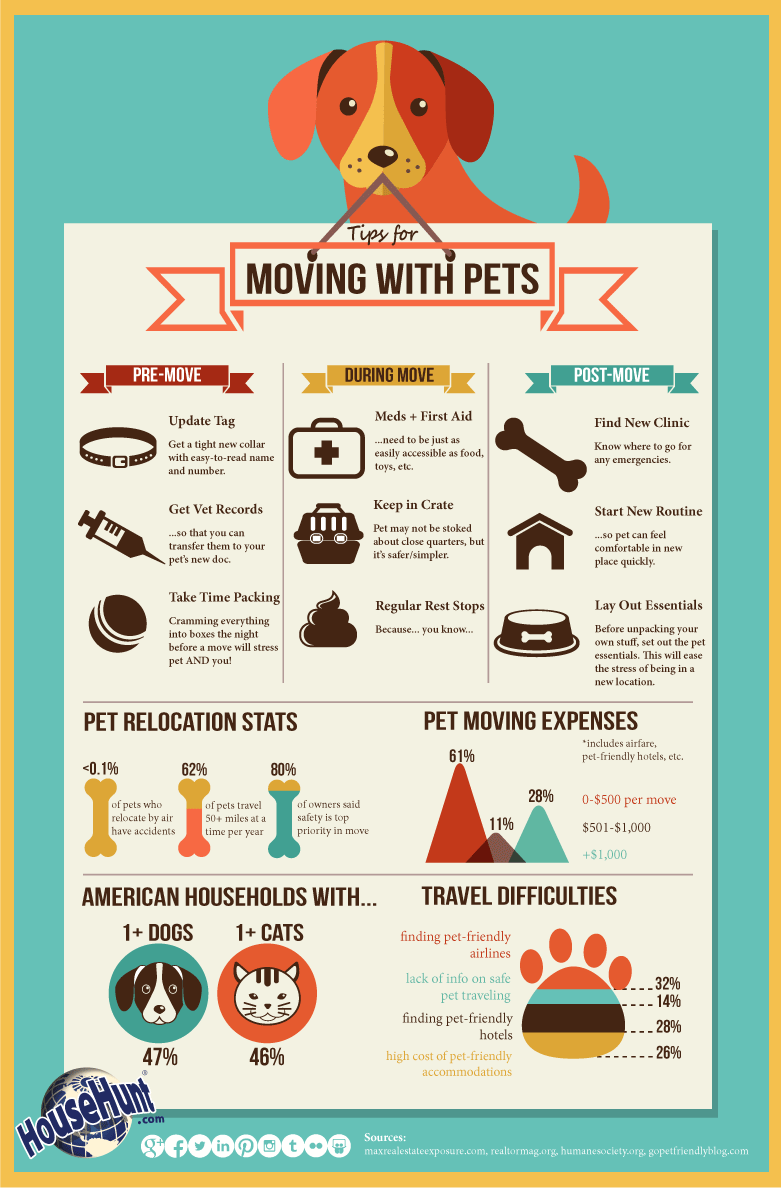Moving is stressful enough as it is for people, so imagine the kind of strain it can put on your dog. With a world of factors at play, moving with a dog in tow can seem like a daunting task (especially if the dog has to fly for a long distance move). As the owner of dogs myself, I understand the need and more importantly the want to keep your dog content during your upcoming move.
While not every problem that may arise has an exact solution, here is a complete guide to moving with your canine family member. We’ll cover everything from how to prepare your dog for a move, how to actually travel with a dog, how to help introduce your dog to their new neighborhood, how to help your dog settle in to their new home, and how to store your dog’s belongings while your move.
5 Tips for Moving with a Dog
Keep Your Dog Away from the Action
During the process of moving, the best way to keep your pet out of harm’s way is to keep them separated. It’s best for the time being, to have one room designated for your dog where they can be kept unaware of your packing. Having your dog exposed to the action will likely cause them to become distressed and raise the dog’s anxiety.
Take Your Dog in Your Own Vehicle
If you can, take your dog in your own vehicle. While space may be an issue, this step is important in the process of acclimating your dog to a new location. As a result, your dog will be better-behaved and put at ease with having you near.
Look into Sedatives
If you own an anxious dog, or one that is easily riled up, consider asking your vet for a pet-friendly sedative. In moderation, sedatives can help relax your dog, and likely help them sleep, as you embark on your move across town, across the nation or even to another country.
Let Your Dog Out of the Car
When preparing for your trip, take the time to map out your course of travel. Check your route for off-leash areas, dog-friendly parks, or even short hikes. When moving with a dog, actually let your dog move! This time away from the crate and the car will likely help put your dog more at ease. Besides, you probably need a break from traveling as well.
Crate Train Your Dog
You should know by experience how your dog reacts to trips in the car. If they often become anxious, consider packing their crate and having them ride secured. If space is an issue, look into purchasing a seatbelt for your dog. Many are as simple as connecting them to your dog’s collar.
5 Tips to Prepare for Moving with Your Dog
Contact Your Vet
If you’re moving out of close proximity, inform your veterinarian to access your dog’s medical records and list of potential prescriptions. This will help keep you up to date on your dog’s vaccinations and help a new veterinary practice to pick up where your last one left off. Also, feel free to ask if they have any recommendations for vets in your new neighborhood.
Check the Local Laws
Before moving, check the local laws of the new address you and your pet are moving to. We advise you to find out if you need a new dog license, what the leash laws look like and if certain breeds are banned in particular places throughout town. This will likely save you time and trouble as you are settling into your new home.
Make Sure Your Dog has the Proper Identification
While not entirely likely, there is always the off chance that your dog may become lost during your trip. Some dogs, out of habit, run off in search of what is familiar to them. In case of this, make sure your dog has the proper identification. An ID tag with your name and phone number should suffice. Microchips are another great option.
Prepare an Overnight Kit
Prepare an easily accessible overnight kit for your dog that contains all the essentials needed for an overnight trip. This would likely include dog food, treats, and bags for waste. Also include anything necessary for the first few nights in your new home with your pet.
Research Pet-Friendly Hotels
If you are traveling across the country with your pet in tow, it’s probably a smart choice to think ahead. Unless you are planning to drive straight through to your location, we recommend researching pet-friendly hotels in advance of your big move. Simply chart out the course of your trip and look for hotels in your selected areas of stopping that will allow dogs.
10 Tips for Helping Your Dogs Settle into your New Home
Keep Your Dog Secluded
If possible, move your belongings before you move your pet. It’s best to set up your new house, or even just a room, before being introduced to the new house for the first time. Any semblance of familiarity will be beneficial in helping your dog to adjust to its new home. Also, having your dog secluded for the first few days in your new home will help them not to become overwhelmed by their new surroundings.
Have a Leash on Hand
When you first move to a new location, it’s best to always have a leash on hand. While it depends on the demeanor of the dog, it is often unclear just how your pet will react to an entirely different environment. Having a leash with you will help you to keep a watchful eye on your pet while helping it to familiarize itself. It will take time for your dog to learn where they can and can’t be inside and out of the house.
Create a Familiar Space
As I mentioned before, creating a familiar space upon first moving in will be valuable in the process of helping your dog adjust to its surroundings. A familiar space in your home can be as simple as placing your dog’s bed and a few toys in an empty room. Arrange crates, kennels, beds and toys as closely as you can to your former setup. The familiar objects in a confined room will help to put your dog at ease and have them out of your hair while you begin to unpack your belongings. Moving with a dog isn’t easy but creating a familiar space is essential!
Do Your Best to “Dog-Proof” Your New Home
While most dogs adjust quickly to change, some are known for their tendency to search for what’s familiar to them. This often includes dogs running off in an attempt to return to their previous home. Because some dogs will likely partake in this very same endeavor, check your fence for places your dog could easily crawl through. If your dog repeatedly escapes from your new house, consider installing gates, both indoors and out.
Show Your Dog Around the Neighborhood
Show your dog around the neighborhood slowly, rather than all at once. Because unfamiliarly can be unsettling for a dog, try to take your dog on a walk through the neighborhood at least once a week to help acquaint them.
Try to Stay Consistent
When first allowing your dog to acclimate to its new surroundings, try to maintain a consistent daily routine. If in your previous home, you fed your dog at a certain time, continue to sustain your pre-existing schedule. Its best to reestablish prior habits as quickly as possible.
Keep Favorite Toys Nearby
Instead of filling your new home with unfamiliar toys, which would likely be one’s gut instinct, keep your dog’s favorites on hand for the move. Forego replacing favorites because their familiar smell will likely be instrumental in helping your dog to feel more at home during playtime in a new location.
Find Nearby Places to Take Your Dog
One of the best ways to help your dog settle into its new environment and neighborhood is to find nearby places to go together. If you have a previously established routine of taking your pet on daily walks or visiting the dog park once a week, look for similar locations in your new neighborhood. The continuance in routine will help your dog to adjust to its new surroundings and help you become better acquainted as well.
Give Your Dog the Attention They Crave
Giving your dog attention is one of most important things you CAN actually control when moving. Spend as much time as you can away from the task at hand to let your dog know everything is okay. Also, try to be mindful of the way your pet is taking in their new surroundings. Some dogs may need to re-house trained after a move.
Be Patient
Moving in itself takes a lot of patience, so this may seem like the obvious answer to acclimating your dog to their new home. Some dogs will adjust within a few days, while others may take weeks to become truly comfortable within their surroundings. No matter how long it takes for your dog to adjust, patience is a sure way to make the process easier on everyone.
How to Introduce Your Dog to a New Neighborhood
House acclimation aside, another important step in moving to a new home is having your dog become acquainted with the neighborhood. After moving with a dog it is important that for the first few weeks, consistently keep your dog on a leash. Slowly, introduce your dog to the neighborhood, a block at a time.
This will allow your dog to familiarize itself with the area and get an idea of what the neighbors may look like. Before you decide to let your dog off the leash, make sure they are well aware of where they live and that they feel comfortable in the environment they are in.
Unfamiliar faces and other neighborhood pets may be unsettling, try your best to have your dog familiarized with your neighbors before foregoing a leash.
Storing Your Dogs Belongings During Your Move
If you don’t have the means to take all of your belongings with you on the first trip to your new home, consider looking into self-storage. Researching beforehand will help you to find affordable storage units within your area.
Neighbor, advertised as the Airbnb of Storage, takes the hassle out of securing a storage unit. By connecting those willing to open up their homes with those looking for a place to store their belongings, storing with Neighbor is a cost effective alternative to standard self-storage facilities.
Storing your dog’s belongings before your move is wise if you want them to be easily accessible. It’s recommended that you pack your dog’s belongings after everything else so that they’re the first thing you unpack in your new home. Consider using self-storage to store pet supplies so that they’re out of the way when moving, but easily attainable when you move into your new home.
Conclusion
While moving with a dog may seem like quite the hassle, it isn’t entirely as bad as it may seem at first. Perfection should not be expected right off the bat. Most dogs adapt fairly easily to new situations, but be mindful of just how much your dog may be taking in and adjust accordingly. In this guide we’ve covered how to make moving with a dog as painless as possible and how to introduce them and ease them into their new living environments.
Have you ever moved with a dog? Share your experiences with us below!
Source: HouseHunt.com
Other Moving Resources
Moving and packing guides
- How to Move a Couch
- How to Move a Mattress
- How to Move a Refrigerator
- How to Move a Piano
- How to Move a Pool Table
- How to Pack Shoes for Moving
- How to Pack Dishes and Glasses

